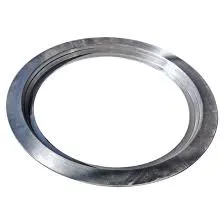- Afrikaans
- Albanian
- Amharic
- Arabic
- Armenian
- Azerbaijani
- Basque
- Belarusian
- Bengali
- Bosnian
- Bulgarian
- Catalan
- Cebuano
- China
- China (Taiwan)
- Corsican
- Croatian
- Czech
- Danish
- Dutch
- English
- Esperanto
- Estonian
- Finnish
- French
- Frisian
- Galician
- Georgian
- German
- Greek
- Gujarati
- Haitian Creole
- hausa
- hawaiian
- Hebrew
- Hindi
- Miao
- Hungarian
- Icelandic
- igbo
- Indonesian
- irish
- Italian
- Japanese
- Javanese
- Kannada
- kazakh
- Khmer
- Rwandese
- Korean
- Kurdish
- Kyrgyz
- Lao
- Latin
- Latvian
- Lithuanian
- Luxembourgish
- Macedonian
- Malgashi
- Malay
- Malayalam
- Maltese
- Maori
- Marathi
- Mongolian
- Myanmar
- Nepali
- Norwegian
- Norwegian
- Occitan
- Pashto
- Persian
- Polish
- Portuguese
- Punjabi
- Romanian
- Russian
- Samoan
- Scottish Gaelic
- Serbian
- Sesotho
- Shona
- Sindhi
- Sinhala
- Slovak
- Slovenian
- Somali
- Spanish
- Sundanese
- Swahili
- Swedish
- Tagalog
- Tajik
- Tamil
- Tatar
- Telugu
- Thai
- Turkish
- Turkmen
- Ukrainian
- Urdu
- Uighur
- Uzbek
- Vietnamese
- Welsh
- Bantu
- Yiddish
- Yoruba
- Zulu
ಡಿಸೆ . 12, 2024 15:18 Back to list
Sand Casting Production Facilities for Efficient Metal Component Manufacturing and Innovation
Understanding Sand Casting Factories A Comprehensive Overview
Sand casting is one of the oldest and most versatile methods of metal casting. It involves creating a mold from sand and then pouring molten metal into it to form a desired object. This technique has been perfected over many years and is widely used in various industries, including automotive, aerospace, and manufacturing. In this article, we will explore the operations of sand casting factories, highlighting their processes, benefits, and challenges.
The Sand Casting Process
The sand casting process begins with the preparation of the mold. Sand, typically a mixture of silica, clay, and water, is compacted around a pattern of the object to be produced. This pattern, often made from metals, plastics, or wood, is a replica of the final product. Once the mold is formed, the pattern is removed, leaving a cavity that replicates the object's shape.
Next, the molten metal is poured into the mold. The metal is usually heated to temperatures exceeding 1,000 degrees Celsius, depending on the specific alloy being used. When the metal is poured, it flows into the cavity created by the mold. After sufficient time for the metal to cool and solidify, the sand mold is broken away to reveal the casting.
Advantages of Sand Casting
One of the primary advantages of sand casting is its flexibility. Sand molds can be easily created and modified, allowing for the production of complex shapes and sizes. This flexibility makes sand casting particularly useful for custom designs and prototypes. Additionally, the materials used for sand casting are relatively inexpensive and widely available, contributing to lower production costs compared to other casting methods.
Another significant advantage is the ability to cast large components. Sand casting can accommodate large parts that would be challenging or impossible to produce using other techniques. This capability is especially beneficial in industries like aerospace and construction, where large metal components are essential.
sand casting factories

Challenges Faced by Sand Casting Factories
Despite its many benefits, sand casting does come with its set of challenges. One of the primary issues is the production of defects in the casting, such as porosity, sand inclusion, or surface roughness. These defects can compromise the integrity of the final product, leading to increases in production costs and time for rework or repairs.
Another challenge is the environmental impact of sand casting. While the materials used are largely recyclable, the process itself can generate significant amounts of waste and emissions. Many factories are now implementing more sustainable practices, such as using reclaimed sand and minimizing energy consumption, to address these environmental concerns.
The Future of Sand Casting
The future of sand casting remains promising, particularly with advancements in technology. Innovations such as computer-aided design (CAD) and 3D printing are revolutionizing how molds are created, allowing for more precise and efficient production methods. 3D printing, in particular, can create complex mold geometries that were previously difficult or impossible to achieve through traditional methods.
Additionally, as industries continue to push for greater sustainability, sand casting factories are likely to incorporate green technologies and practices, thereby reducing their carbon footprint and promoting environmental stewardship.
Conclusion
In conclusion, sand casting factories play a vital role in the manufacturing landscape by offering a flexible, cost-effective, and widely applicable method for producing metal components. While facing challenges like defect production and environmental impact, advancements in technology and sustainable practices offer opportunities for growth and improvement. As industries evolve, sand casting will continue to adapt, ensuring its relevance and importance in the world of manufacturing for years to come.
-
8mm Thin-Walled Cast Steel Manhole Cover Pallet Bottom Ring | Durable
NewsAug.04,2025
-
Premium Cast Iron Water Main Pipe: Durable, Corrosion-Resistant
NewsAug.03,2025
-
Durable Cast Iron Water Mains | AI-Optimized Systems
NewsAug.02,2025
-
High-Efficiency Propane Boiler for Baseboard Heat | Save Energy
NewsAug.01,2025
-
Premium Source Suppliers for Various Gray Iron Castings
NewsJul.31,2025
-
Durable Cast Iron Water Main Pipes | Long-Lasting
NewsJul.31,2025


